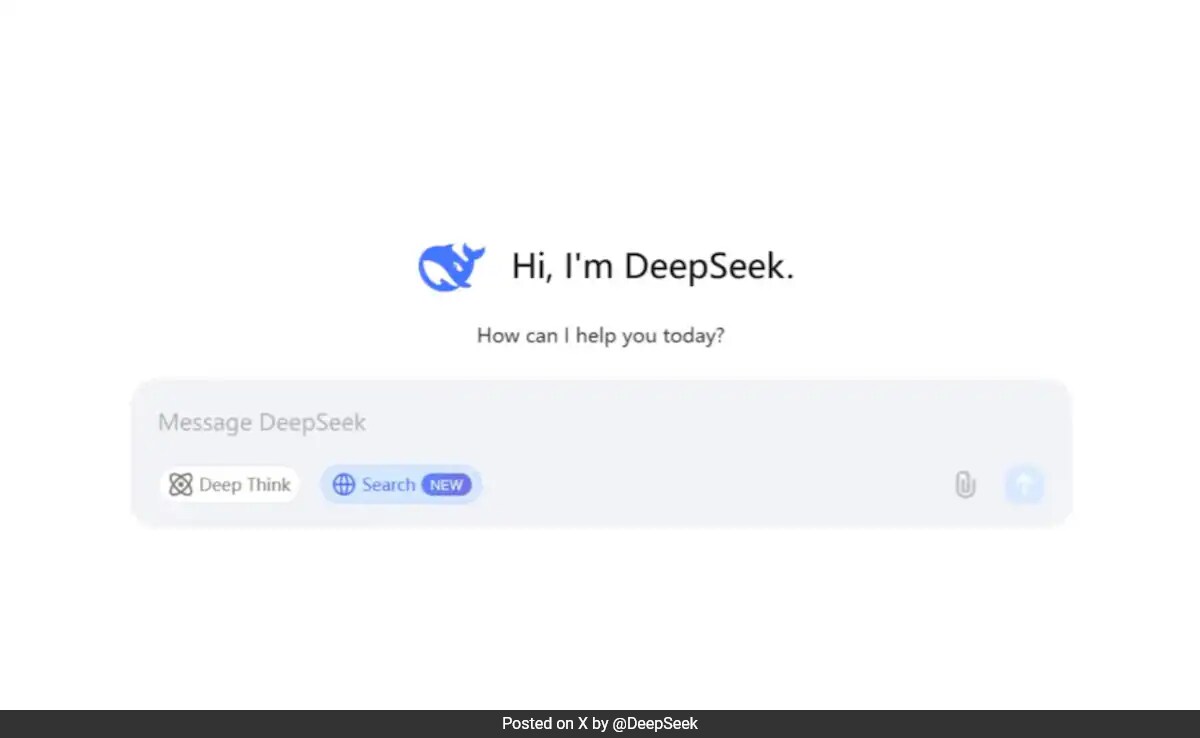This company has no active jobs
Company Information
- Total Jobs 0 Jobs
- Category Education Technology
- Location Dubai
- Full Address ZG
About Us
How China’s Low-cost DeepSeek Disrupted Silicon Valley’s AI Dominance

It’s been a number of days considering that DeepSeek, a Chinese expert system (AI) business, rocked the world and worldwide markets, sending American tech titans into a tizzy with its claim that it has constructed its chatbot at a small portion of the cost and energy-draining information centres that are so popular in the US. Where companies are putting billions into transcending to the next wave of expert system.

DeepSeek is all over today on social networks and is a burning of conversation in every power circle worldwide.
So, what do we understand now?
DeepSeek was a side task of a Chinese quant hedge fund firm called High-Flyer. Its expense is not just 100 times more affordable however 200 times! It is open-sourced in the real meaning of the term. Many American companies attempt to solve this issue horizontally by building bigger data centres. The Chinese firms are innovating vertically, utilizing brand-new mathematical and engineering techniques.
DeepSeek has now gone viral and is topping the App Store charts, having actually beaten out the formerly undeniable king-ChatGPT.
So how exactly did DeepSeek manage to do this?
Aside from more affordable training, not doing RLHF (Reinforcement Learning From Human Feedback, a maker learning strategy that uses human feedback to enhance), quantisation, and caching, demo.qkseo.in where is the decrease coming from?
Is this since DeepSeek-R1, a general-purpose AI system, isn’t quantised? Is it subsidised? Or is OpenAI/Anthropic just charging too much? There are a couple of fundamental architectural points intensified together for huge cost savings.
The MoE-Mixture of Experts, oke.zone an artificial intelligence strategy where numerous professional networks or learners are used to break up an issue into homogenous parts.
MLA-Multi-Head Latent Attention, probably DeepSeek’s most critical development, to make LLMs more efficient.
FP8-Floating-point-8-bit, an information format that can be utilized for training and inference in AI designs.
Multi-fibre Termination Push-on ports.
Caching, a process that shops several copies of information or files in a short-lived storage location-or cache-so they can be accessed much faster.
Cheap electricity

Cheaper materials and expenses in general in China.
DeepSeek has actually also pointed out that it had actually priced previously versions to make a small earnings. Anthropic and OpenAI had the ability to charge a premium because they have the best-performing designs. Their clients are also mainly Western markets, which are more affluent and can afford to pay more. It is also important to not undervalue China’s objectives. Chinese are known to sell products at extremely low costs in order to compromise competitors. We have actually previously seen them offering items at a loss for 3-5 years in industries such as solar power and electrical vehicles till they have the market to themselves and can race ahead highly.
However, oke.zone we can not afford to discredit the fact that DeepSeek has been made at a less expensive rate while using much less electricity. So, what did DeepSeek do that went so ideal?
It optimised smarter by proving that exceptional software application can overcome any hardware limitations. Its engineers ensured that they focused on low-level code optimisation to make memory use efficient. These enhancements made sure that performance was not hindered by chip constraints.
It trained only the crucial parts by utilizing a technique called Auxiliary Loss Free Load Balancing, which made sure that just the most appropriate parts of the design were active and updated. Conventional training of AI designs typically involves updating every part, consisting of the parts that do not have much contribution. This causes a substantial waste of resources. This caused a 95 per cent decrease in GPU use as compared to other tech giant companies such as Meta.
DeepSeek used an ingenious technique called Low Rank Key Value (KV) Joint Compression to get rid of the obstacle of inference when it pertains to running AI models, which is extremely memory extensive and exceptionally pricey. The KV cache stores key-value pairs that are necessary for attention systems, which utilize up a lot of memory. DeepSeek has found an option to compressing these key-value pairs, hb9lc.org using much less memory storage.
And now we circle back to the most important component, DeepSeek’s R1. With R1, DeepSeek basically broke one of the holy grails of AI, which is getting designs to reason step-by-step without depending on mammoth monitored datasets. The DeepSeek-R1-Zero experiment revealed the world something remarkable. Using pure reinforcement finding out with carefully crafted benefit functions, DeepSeek handled to get models to develop sophisticated thinking capabilities entirely autonomously. This wasn’t purely for repairing or problem-solving; rather, akropolistravel.com the model naturally discovered to create long chains of thought, self-verify its work, and designate more computation issues to tougher issues.
Is this a technology fluke? Nope. In fact, DeepSeek might simply be the guide in this story with news of a number of other Chinese AI designs appearing to offer Silicon Valley a shock. Minimax and Qwen, both backed by Alibaba and Tencent, are some of the prominent names that are promising huge modifications in the AI world. The word on the street is: America built and keeps structure larger and bigger air balloons while China simply constructed an aeroplane!
The author is a freelance journalist and functions author based out of Delhi. Her primary locations of focus are politics, social concerns, climate modification and lifestyle-related subjects. Views revealed in the above piece are personal and exclusively those of the author. They do not necessarily show Firstpost’s views.



